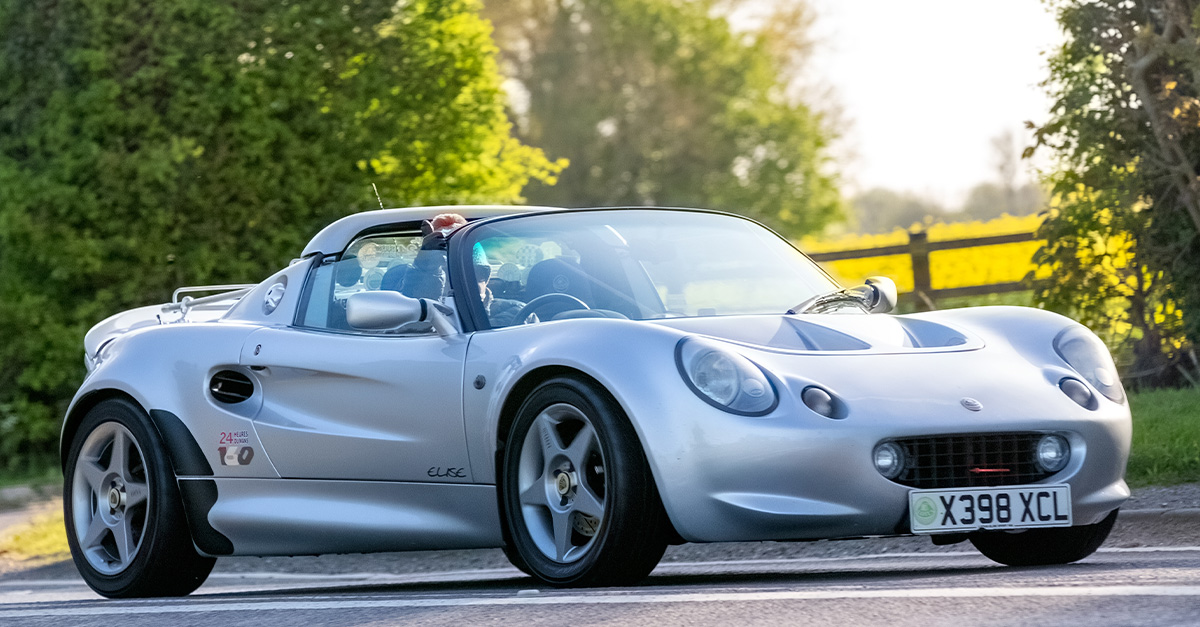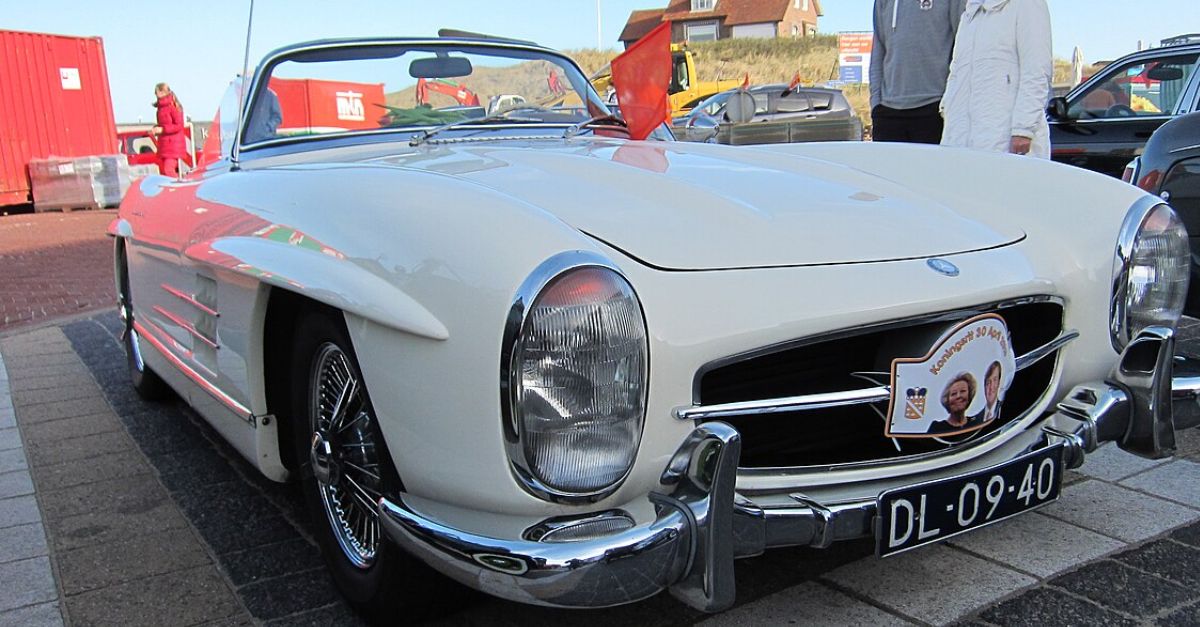Rebellion Becomes Reality
Nobody expected an oil nation to ditch gasoline cars first. Yet here we are, watching Norway sell almost nothing but electric vehicles. Their approach was surprisingly simple and brilliantly effective.

A-Ha's Electric Rebellion
Morten Harket and Magne Furuholmen, fresh from their global "Take on Me" success, had just imported a quirky electric vehicle from Switzerland after attending an environmental conference with activist Frederic Hauge. But here's where it gets interesting—they turned their new toy into a weapon of civil disobedience.
A-Ha's Electric Rebellion (Cont.)
The trio drove through toll booths without paying, parked illegally wherever they pleased, and cruised in bus lanes, all while flashing their celebrity status. Norwegian authorities weren't amused and continued to impound their 45-kilometer range Fiat, but fans would repurchase it at auction.
 Sven-Sebastian Sajak, Wikimedia Commons
Sven-Sebastian Sajak, Wikimedia Commons
Oil Money Strategy
So, why would Western Europe's biggest oil producer want to eliminate gasoline rides? The answer lies in a brilliant long-term strategy that most countries missed. While Norway extracted oil from the North Sea, it simultaneously built the world's largest sovereign wealth fund worth over $1.3 trillion.
Oil Money Strategy (Cont.)
This financial cushion meant the government could afford to sacrifice short-term tax revenues from such cars to achieve longer-term environmental goals. The country's leadership recognized early that domestic oil wouldn't last forever, and their wealth fund could subsidize the transition to clean transportation.
 Ryan Hodnett, Wikimedia Commons
Ryan Hodnett, Wikimedia Commons
First Tax Break
The year 1990 marked a pivotal moment when Norway quietly eliminated import taxes on zero-emission vehicles. It was a thoughtful preparation for a future that most governments couldn't have envisioned. Traditional cars faced Norway's notoriously high import duties, often adding 25% to vehicle costs.
 Pudelek (Marcin Szala), Wikimedia Commons
Pudelek (Marcin Szala), Wikimedia Commons
Free Bus Lanes
In some years, Oslo faced a traffic nightmare that sounds familiar to any major city dweller: gridlocked streets, angry commuters, and overflowing public transit. The solution they chose was to give electric vehicle owners access to dedicated bus lanes throughout the city.
Cheaper Than Gas
By 2001, Norway had assembled perhaps the most aggressive pro-EV tax structure ever created, culminating in complete VAT exemption. While gasoline automobiles faced the full 25% value-added tax on top of already steep import duties and emissions-based fees, electric rides sailed through the system tax-free.
 Wolfmann, CC BY-SA 4.0, Wikimedia Commons
Wolfmann, CC BY-SA 4.0, Wikimedia Commons
Think City Launch
Ford Motor Company's million-dollar acquisition of Think Nordic in 1999 quickly became one of the most expensive lessons in automotive history. The Think City, a peculiar two-seater with plastic body panels and lead-acid batteries, was Norway's first mass-produced electric car.
Think City Launch (Cont.)
With just 100 kilometers of range and a top speed barely suitable for city driving, it should have been a complete failure. Instead, Norwegian consumers got attracted to its quirky design and practical urban functionality, purchasing over 1,000 units even as the company stumbled through four bankruptcies.
 Zero Emission Resource Organisation, Wikimedia Commons
Zero Emission Resource Organisation, Wikimedia Commons
Tesla Arrives
Elon Musk's decision to make Norway Tesla's first European market in 2013 was a great move targeting the world's most EV-friendly territory. The Model S landed in Norwegian showrooms priced at $70,000, but after tax exemptions, buyers paid roughly the same as a well-equipped BMW 5 Series.
 Norsk Elbilforening (Norwegian Electric Vehicle Association), Wikimedia Commons
Norsk Elbilforening (Norwegian Electric Vehicle Association), Wikimedia Commons
Tesla Arrives (Cont.)
In its first two weeks of September 2013, the Model S outsold all other automobiles, including traditional combustion models like the Volkswagen Golf. The Model S took a 6.2% market share in that short period, with 322 units sold compared to the Golf’s 256.
 JoachimKohlerBremen, Wikimedia Commons
JoachimKohlerBremen, Wikimedia Commons
Charging Network Expands
Then came the summer of 2012, when Circle K installed Norway's second public fast charger in the tiny town of Minnesund, halfway between Oslo and Lillehammer ski resorts. By 2015, Norway had established the world's first national fast-charging network with stations every 50 kilometers on major roads.
 Daniel Mietchen, Wikimedia Commons
Daniel Mietchen, Wikimedia Commons
Cold Weather Success
Arctic temperatures in northern Norway regularly drop very low, creating conditions that should theoretically kill an electric vehicle. However, Norwegian EV owners in Finnmark reported that 54% of new car purchases in 2022 were fully electric, indicating that concerns about cold weather were largely unfounded.
Apartment Charging Rights
After some time, Urban Norway faced another massive infrastructure challenge: how do you charge an electric vehicle when most of the population lives in apartments without private garages? In response to this, the government passed the first-ever "charging right" legislation.
Apartment Charging Rights (Cont.)
This action legally required apartment buildings and housing cooperatives to allow residents to install personal charging stations at their own expense. The law turned every parking space in Norway into a potential EV charging location, solving the urban charging problem through legal mandate.
2025 Electric Goal
In 2017, Norway's Parliament made a bold declaration that by 2025, all new passenger cars, city buses, and light commercial vehicles should be zero-emission. This wasn't a ban on gasoline cars but rather a goal supported by continued incentives. The announcement gave automakers eight years to prepare.
 Mariordo (Mario Roberto Durán Ortiz), Wikimedia Commons
Mariordo (Mario Roberto Durán Ortiz), Wikimedia Commons
2025 Electric Goal (Cont.)
Furthermore, from 2025 only zero-emission city buses are permitted to be purchased. This policy forms a core part of Norway’s strategy to transition to a low-emission society by 2050 and to cut down greenhouse gas emissions by 40% by 2030, consistent with the Climate Act.
 Norsk Elbilforening (Norwegian Electric Vehicle Association), Wikimedia Commons
Norsk Elbilforening (Norwegian Electric Vehicle Association), Wikimedia Commons
The Tipping Point
December 2016 witnessed Norway become the first country where plug-in electric vehicles represented 5% of all registered cars on the road. Transportation experts consider this the critical mass threshold where EVs become self-sustaining in a market. There was a shift from niche adoption.
 Mariordo (Mario Roberto Durán Ortiz), Wikimedia Commons
Mariordo (Mario Roberto Durán Ortiz), Wikimedia Commons
Incentives Start Reducing
After two decades of generous EV incentives, Norway began the delicate process of scaling them back. Road taxes returned for electric vehicles in 2021, though at reduced rates compared to gasoline automobiles. Some municipalities introduced modest parking fees for EVs.
 Tommy Gildseth, Wikimedia Commons
Tommy Gildseth, Wikimedia Commons
Incentives Start Reducing (Cont.)
Ferry discounts were capped at 50% rather than being completely free. The key was gradual reduction rather than sudden removal as policymakers had learned from other countries where abrupt incentive cuts caused EV sales to plummet. Even with reduced benefits, Norwegian consumers continued choosing electric options.
 Kristian (Picasa Web Albums user), Wikimedia Commons
Kristian (Picasa Web Albums user), Wikimedia Commons
Premium Tax Returns
Weight-based registration taxes were also introduced, with BEVs subject to 12.5 NOK per kilogram over 500 kg. A typical 1,700 kg electric SUV now pays approximately 15,000 NOK ($1,491) in registration fees. Additionally, the 25% VAT exemption was limited to vehicles costing under 49,731 Dollars.
Nine-In-Ten Electric
Norway reached an extraordinary milestone with 88.9% of new passenger cars sold being fully electric last year. This meant that fewer than one in ten new cars had internal combustion engines. Traditional automakers who had been slow to electrify found themselves with unsellable inventory in Norwegian dealerships.
 Norsk Elbilforening, Wikimedia Commons
Norsk Elbilforening, Wikimedia Commons
Norwegian Influence
The "Norwegian model" became a template studied worldwide. For instance, the Netherlands adopted similar tax structures favoring EVs over gasoline cars. Several US states introduced comprehensive EV incentive packages inspired by Norway's approach. Additionally, we saw China study Norwegian charging infrastructure deployment strategies.
 Mariordo (Mario Roberto Durán Ortiz), Wikimedia Commons
Mariordo (Mario Roberto Durán Ortiz), Wikimedia Commons
Norwegian Influence (Cont.)
The European Union also incorporated Norwegian policy lessons into continent-wide EV regulations. However, few countries possessed Norway's unique advantages: oil wealth to fund incentives, abundant hydroelectric power, and manageable population size that made infrastructure deployment feasible. Still, the Norwegian blueprint provided a roadmap others could adapt.
















